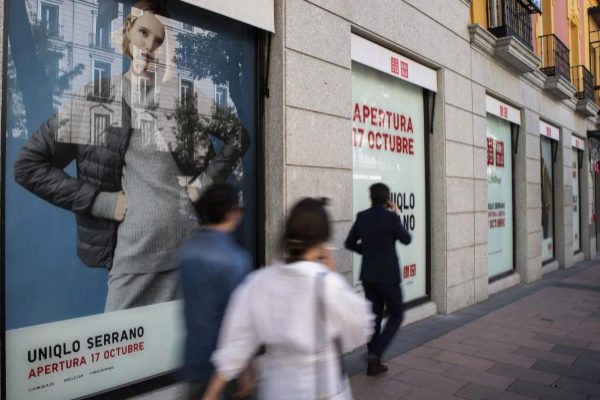After three years of having landed in Spain, the Japanese giant, Uniqlo , opens today a second store in the country, the first in the capital.
Although it has been said that this opening could be taking Inditex's sleep away, the truth is that the real battle between both textile giants happens far away from number 6 of the Goya street in Madrid where the store will be located. Specifically, 8,783 km, in China . Both the firm of Amancio Ortega and that of billionaire Tadashi Yanai, have set the pulse of their commercial expansion in the Asian field.
Although in the beginning both textiles were almost on par, things have changed. In 2015, Uniqlo had a total of 467 stores in China. While Inditex more than 500. Currently, the Japanese giant already exceeds the multinational Arteixo with more than 100 establishments.
Here the data:
Fast Retailing, Uniqlo's parent company, began its flirtation with the Chinese market in 2002 when it opened two stores in Shanghai . By then the firm already predicted its conquest, "our sales in China have the greatest market potential in the world, it could even exceed our sales in Japan." 17 years later that is a reality. The revenues of Uniqlo international in 2018 for the first time exceeded those of its local division, with an increase of 26.6% in the rest of the countries , highlighting the main engine of growth for China and Southeast Asia.
As for the number of stores, it now has 768 stores mainly distributed in China (673), Taiwan (68), and Hong Kong (28). The country also recorded increases in earnings during fiscal year 2018, with revenues of 439.8 billion yen (+ 26.9% year-over-year). Thus, Uniqlo's intentions with China have figures for the future. By 2021 , it expects establishments in the country to exceed 1,000.
The lines of conquest by the Galician leader, Inditex , began a little later, in 2006 when, like Uniqlo , he opened his first branch through the port of Shanghai . Since then, China has become the second commercial market where the firm accumulates the largest number of stores after Spain, in total, 655 . Above, from Russia , Italy and Portugal , priority investment countries for the firm.
Although in the last annual presentation of results, Pablo Isla advised to stop paying attention "to the number of stores". China is precisely the country that between 2008 and 2018, the firm has opened the largest number of establishments, 628 new stores , which represents 21% of its total openings, including Hong Kong (35), Macao (9) and Taiwan (22). Unlike Spain, where there have been the largest number of closures (-261) due to the chain's commitment to optimize its commercial space with fewer stores, but larger.
But China is also the country where Inditex employs more people . Specifically, 11,680 employees , according to the memory of the last fiscal year. Although sales by geographic area are not disaggregated, in 2018 Asia accumulated 23.2% of the firm's revenues.
Thus, the other industry giant that has also targeted the Asian market is the Swedish firm H&M that has awarded the silver medal to China, where the company has 530 subsidiaries . Only surpassed by the United States , where the firm still has the largest number of stores, 578.
'Made in China'
China has not only been a striking field for the opening of stores, in fact, the three textile giants began their journey in the Asian market in the production arena . Specifically, Inditex works with more than 1,903 associated factories that in turn indirectly employs 400,000 employees, it is the largest number of factories among the 12 clusters that concentrate 96% of its production.
For its part, H&M concentrates 80% of its production in Asia. While Uniqlo notes that, "we outsource all production to factories associated with China and other countries."
According to the criteria of The Trust Project
Know more- Inditex Group
CompaniesThe slow return of 'made in Spain'
Companies 80% of Inditex executives are women
FIRA «The entrepreneur does not understand that window dressing must be sustainable»

